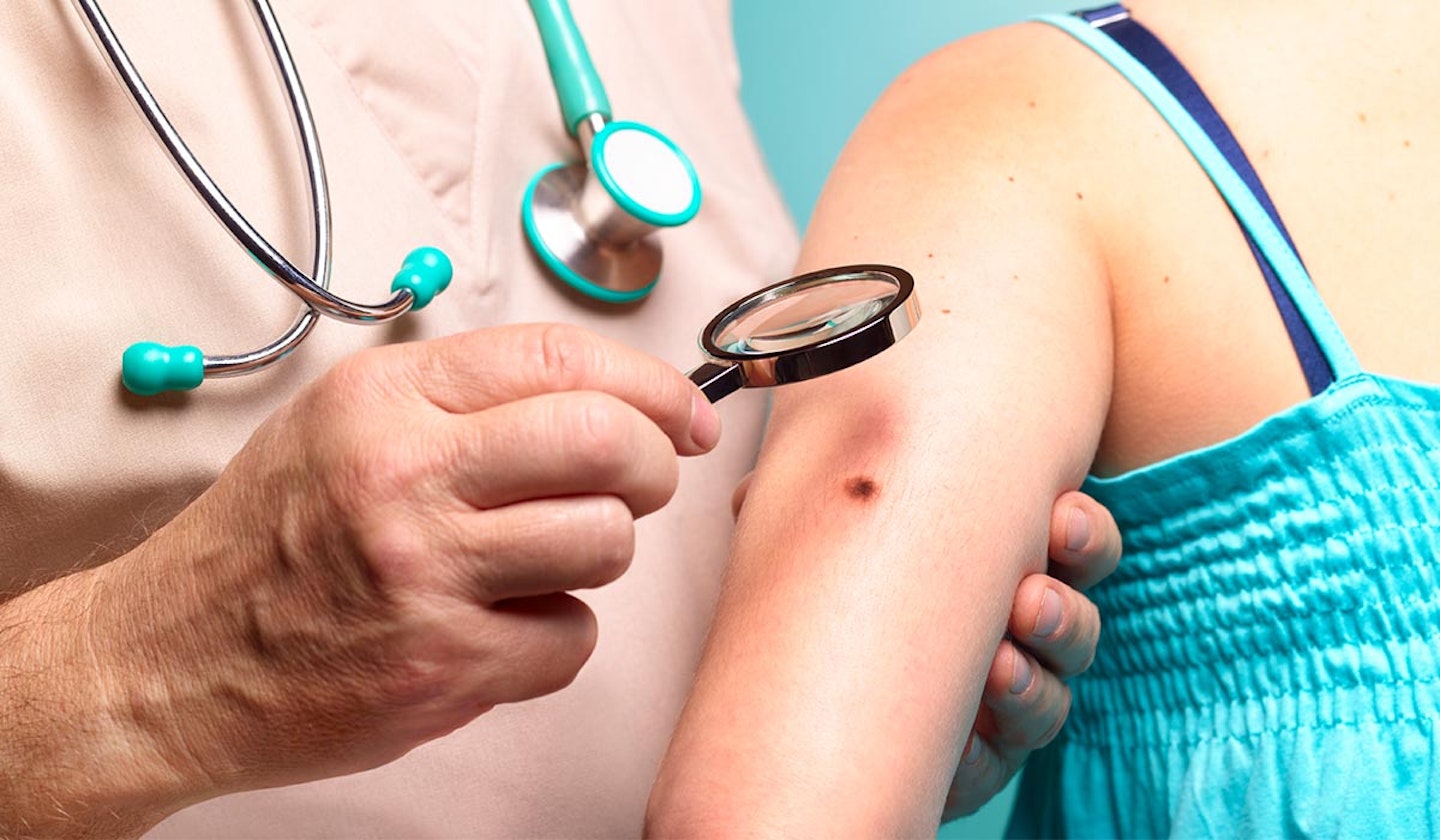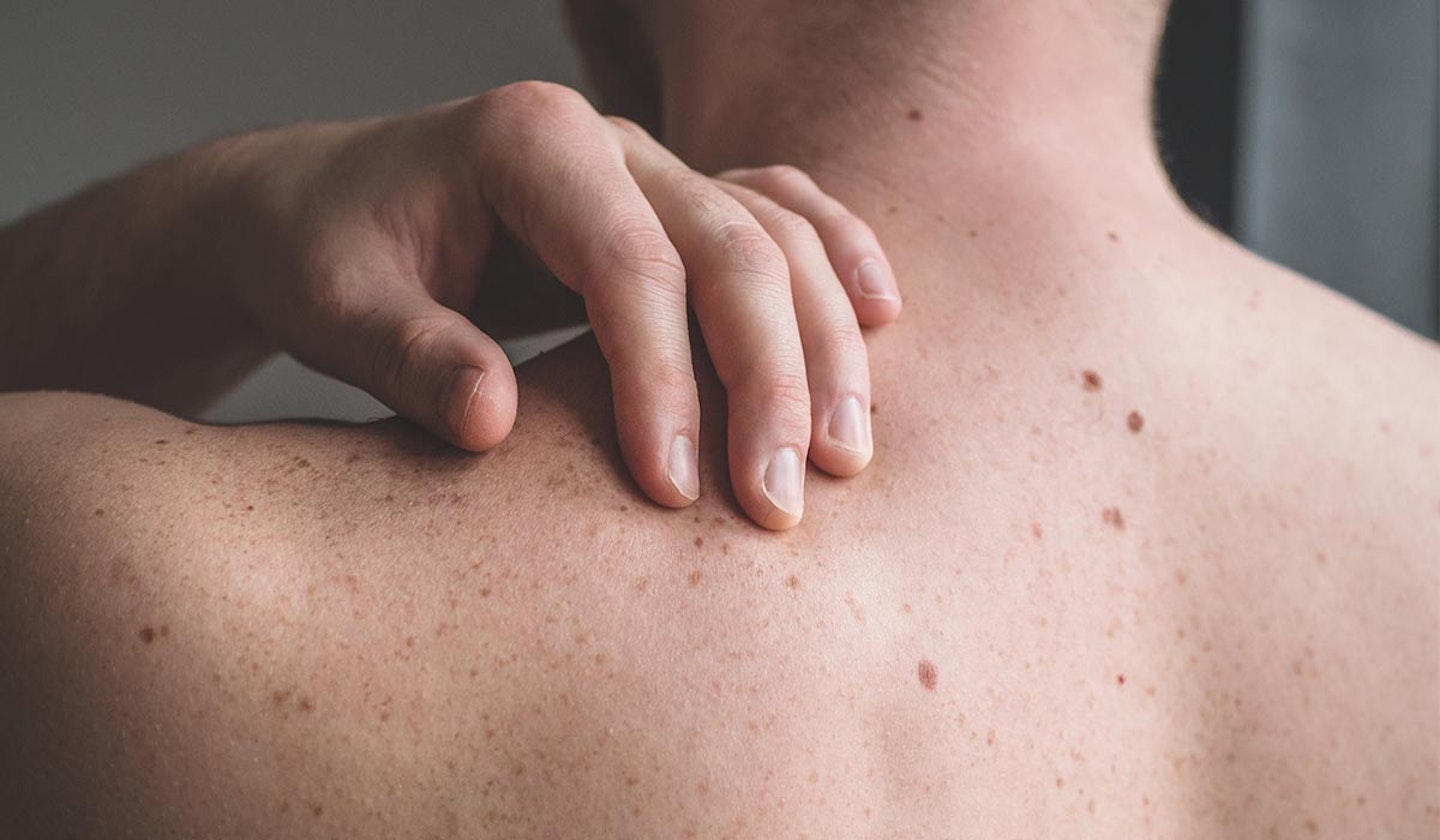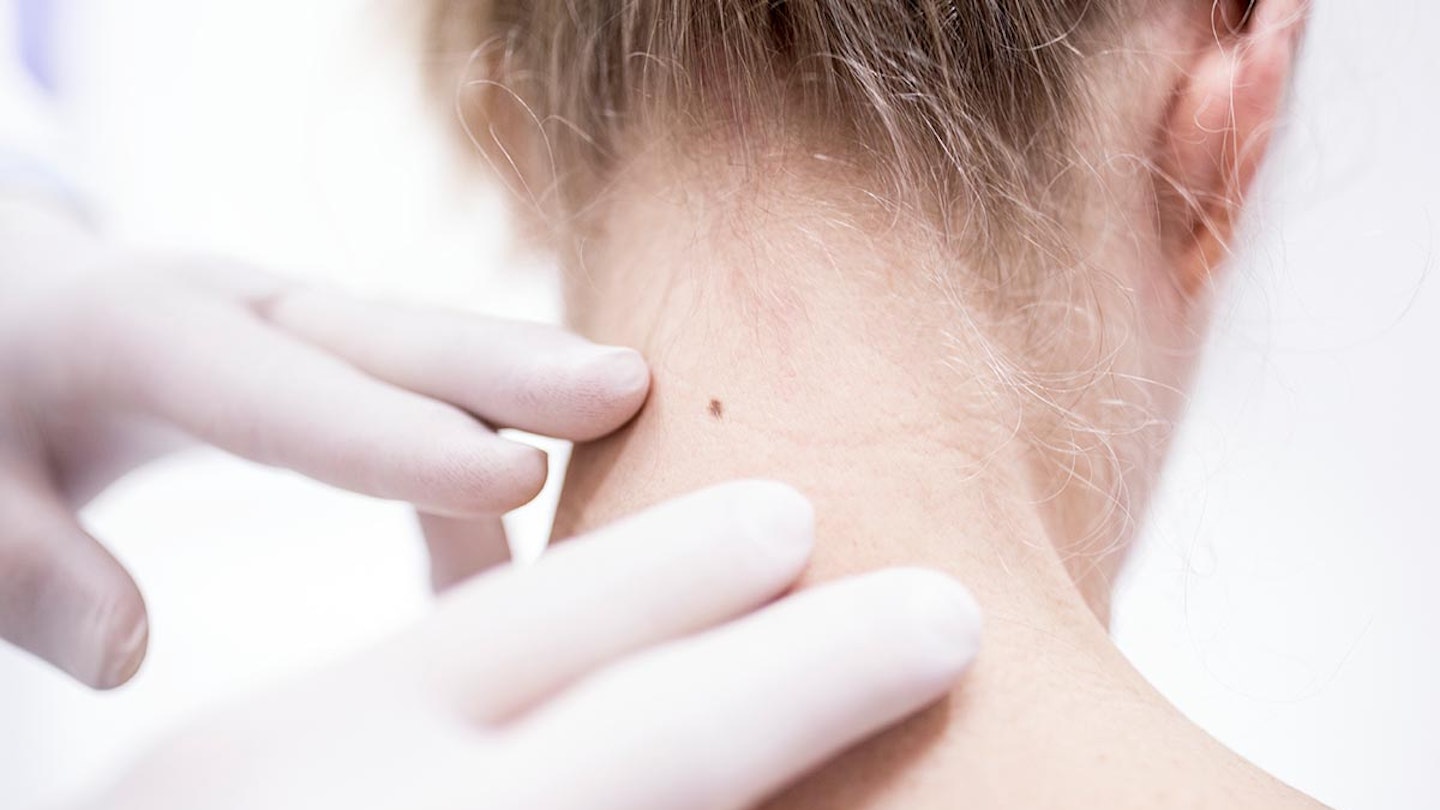We're all aware of how important it is to protect our skin in the summer, and keep an eye out for signs of skin damage - but did you know it's as important to keep track throughout the year, even in the colder months?
"Damage to moles is gradual and doesn’t always happen instantly after sun exposure, so it’s during the long winter that changes to moles can often go unnoticed, because we’re all wrapped up in lots of layers of clothing and forget to check them,” explains Dr Adam Friedmann, leading consultant dermatologist at Stratum Dermatology Clinics.
Around 4 in 10 UK adults (41 per cent) admitted to spending more time in the sun during the first lockdown according to a Cancer Research UK YouGov survey, with a third (35 per cent) saying they didn’t take care or wear adequate sun protection in strong sun in their own outside space.
The heatwave through the summer months meant most of us were making the most of spending time outside. But the fact that we were sunbathing at home in our own gardens may have given a false sense of security.
“We’ll not only see a delayed diagnosis of skin cancer because of a drop in people having mole checks during lockdown but also from the knock-on effect of people spending more time outside than normal and not protecting their skin adequately,” Adam continues.
“It’s really important to get into the habit of doing a quick mole check from time to time, in front of the mirror, where you take a look at all the skin and thoroughly search the full body for anything new or different," says Adam.
Here are Dr Friedmann's answers to some common questions surrounding skin damage and mole checking...
Can I counteract the effects of sun damage?
You cannot undo chronic sun exposure and intense burning episodes. This type of sun damage has a memory, and the damage it causes to cellular DNA can start to show up many years later.
There is no solid evidence to show that specific skincare ingredients reverse sun damage but there is a theory that the healthier your lifestyle, the less likely you are of developing a melanoma. Eating a nutrient dense, balanced diet with plenty of antioxidants will have a positive impact on your skin and might reduce your long-term likelihood of developing cancer.
Monitoring the skin for signs of skin cancer is also crucial because if caught early enough, a melanoma is very easily treated and can be cured. Continuing good sun habits, such as wearing a hat and making sure to apply sunscreen at regular intervals will reduce adding to the existing risk.
Should we wear an SPF in the winter?
It’s not necessary to wear an SPF from December to February from a skin cancer perspective but being sun smart during the winter months will still help with photo ageing.
Sunlight is by far the biggest single cause of photo ageing because UV radiation causes the breakdown of collagen. So, to slow down the ageing process, it is crucial to protect your skin by wearing high factor sunscreen all year round.
Also if you have a family history of skin cancer, it's even more important to be vigilant about applying suncream.
Wear a SPF sun cream with at least factor 15, but ideally 30 on your face to protect from the photo ageing effects of ultraviolet B (UVB).
Am I more at risk of developing skin cancer as I get older?
Yes, you are more at risk as you get older. However, melanoma is one of the commonest cancers in young people because UV rays are hazardous to the skin no matter how old you are.
There are other types of skin cancers, such as non-melanoma skin cancers that come with an increased risk as we age.
What exactly is a mole and are they always harmful?
A mole is a skin lesion or spot on the skin which is usually brown in colour. It is made up of a cluster of cells known as melanocytes, which are responsible for producing the pigment in your skin. Occasionally these melanocytes grow in a cluster instead of being spread out, which results in the formation of a mole.
The vast majority of moles are benign, but occasionally they can turn into a skin cancer; melanoma. Any mole that’s changing shape or continues to get bigger needs to be reviewed, whether it is new or pre-existing.

How easy is it for doctors to check moles virtually?
Dermatology lends itself better to video conferencing than other specialties but that said, the quality of a video call is not as good as an image, so we normally ask patients to send through an accompanying image that I can look at, zoomed in, and that gives me a very good chance of being able to diagnose it. But, even then, there will be occasions when you need to get a microscopic evaluation.
Because we're talking about potential skin cancer, I would implore any patient that has anxiety to not be afraid to go to a clinic for a cancer screening check. Ever since covid kicked off, as a group, all of our clinics have adopted all the appropriate government advice and techniques for PPE, deep cleaning, social distancing. As far as I'm concerned it's safer in my clinic than it is going to the supermarket.
So, it's one of those things - yes the video conferencing works very well but obviously occasionally we do need to see the patient and above all if we do need to do surgery then of course we need to see the patient.
How to check moles at home
When doing a skin cancer check, or detection of skin abnormalities, look for anything that stands out from the other moles, changing in size, shape or colour. In short, anything that looks markedly different.
Repeat this at the beginning of the month, then again six and twelve weeks later if you believe you are high risk. If not, then once or twice over the winter is fine.
If you’re unsure, try this Mole Checking Quiz to take an interactive self-assessment to find out if your moles are likely to be safe or need to be checked by an expert.

Mole changes to look out for:
• Any mole that stands out differently from the other moles on your skin is one that should be taken seriously. This sign is sometimes called the “ugly duckling“ sign by dermatologists and means your mole should be checked as it is different to the rest.
• Cancerous moles (melanomas) do not normally have a rough, warty surface like benign moles often do. Warty rough surfaces are usually a benign growth pattern. Early melanomas are often completely flat to the skin
• The “halo“ naevus results from the immune system attacking a mole and destroying it. Sometimes, in the battle against melanocytes, the immune system will destroy the normal surrounding skin pigmentation and the mole will have a white ring around it. Although these halo naevi are usually benign, it is worth having your mole checked if it develops a white ring around it.
• If you have odd-looking or irregular moles you may be concerned that they could be cancerous or precancerous. However, if you compare your moles and they all look very similar to one another, then it is much less likely that they are cancerous, but instead, that your moles just happened to look like this.
The ABCDE guide is a memorable way to recall the warning signs.
• Asymmetry - Does the left side of the mole look like the right side, or does the top half look like the bottom half? Both halves should usually look the same.
• Border – Is the border well-defined and sharp? Watch out for unclear and irregular or blurry borders.
• Colour - Is your mole all the same colour? Keep an eye out for any mole changes in colour, especially black or blue colours, multiple colours or pale areas.
• Diameter - Is your mole smaller than the end of a pencil? A melanoma is usually more than 6mm in diameter. However, anything growing should be reviewed as melanomas can start small.
• Evolving - Is the mole the same size it was when you first noticed it? Monitor any changes in size, colour, crustiness, itching or bleeding of existing moles.
Meet the expert
Dr Adam Friedmann is Chief Medical Officer of The Dermatology Partnership and Clinical Director of the Harley Street Dermatology Clinic. He trained at King’s College School of Medicine, London. He has worked at many of London’s teaching hospitals including King’s College, St Georges, Hammersmith, Barts and the London and the Royal Free Hospitals.
